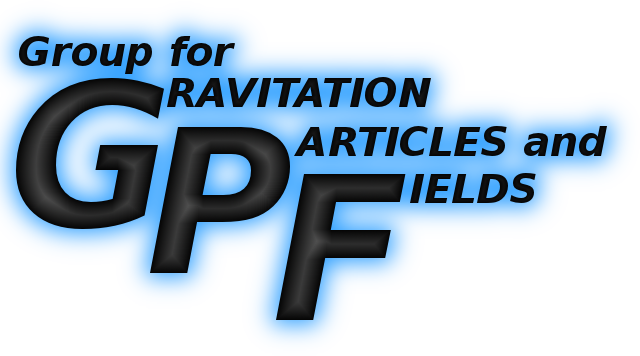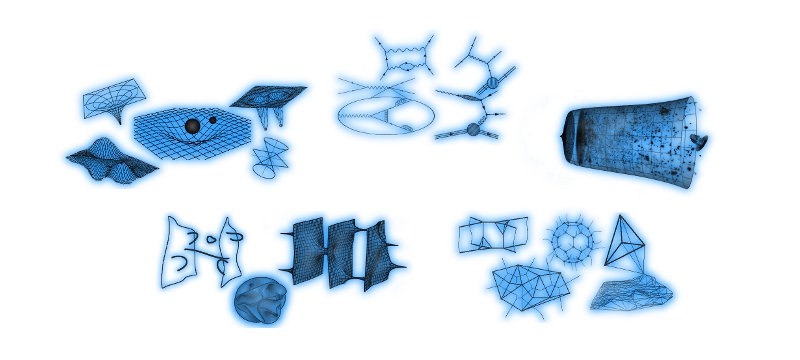


Dragan Popović Memorial Conference 2025
Thursday 27. March 2025, Belgrade, Serbia
About the conference

|
Our dear friend and colleague, Professor Dragan Popović, passed away on 22. March 2015. This was a great loss for the entire physics community. Prof. Popović has influenced many of us deeply with his outstanding enthusiasm and unique talent for discovering the beauty and simplicity in physics. In addition, everyone holds in high regard Dragan's rare kindness and honesty, which set an example for many colleagues and young researchers. To honor Prof. Popović and to celebrate his remarkable science and life, as his long term colleagues and students, we are organizing a Memorial Conference on Thursday, 27. March 2025, marking ten years of his passing. We feel that the best way to remember Dragan as a scientist, friend, teacher and mentor, is to dedicate to him a lively conference with exciting lectures and a lot of fruitful discussion. In order to make this happen, we invite all Dragan’s colleagues, scientists and young students, to join us and participate in the conference. The topic of the conference is mainly theoretical and experimental high energy physics, relativistic physics, quantum gravity, and all related research areas. In line with Dragan's everlasting interest and enthusiasm for fundamental physics, we hope to have lectures which cover the very forefront of modern high energy and gravitational physics today. |
Organization
The Conference is organized by Group for Gravitation, Particles and Fields and by the Laboratory for High Energy Physics (Institute of Physics, University of Belgrade).
Scientific committee
Branislav Cvetković, Nenad Vranješ, Marko Vojinović
Registration
The conference is free and open to everyone interested. Nevertheless, in order to have an estimate of the number of participants, we ask you to fill in the registration form.
Programme
Lectures will be held on Thursday 27. March 2025, at the Institute of Physics, lecture room "Dragan Popović".
|
10:00 -- 10:45 --- Opening |
Introduction and opening of the conference: Opening speech by dr Aleksandar Bogojević, director of the Institute of Physics Belgrade Screening of a short video-essay about Dragan's life and work Reading of the text sent by Dragan's collaborator Tsuneo Uematsu, from Kyoto University |
|
|
10:45 -- 11:15 --- Lecture 11:15 -- 11:30 --- Discussion |
Speaker: Branislav Sazdović (lecture slides) |
Title: From symmetry group to free field equations Abstract: Principle equations which contain field equations for particles of all spins and helicities are proposed. In particular, from Poincare Casimir invariants field equations for massive Klein-Gordon, Dirac, vector and Rarita-Schwinger fields were obtained. The same approach was applied to massless particles and the results were Maxwell and linearized Einstein equations. The Weinberg idea that Lorentz invariance induces local gauge transformations is confirmed. It is not mentioned in any other standard textbook, except Weinberg’s one, and this is proven in general case. This approach can be widely used to construct field theory for systems in various fields of physics. The only input parameter is symmetry group of the system, so that all theories with same symmetry group will look the same at sufficiently low energy. |
|
11:30 -- 11:45 --- Break |
Coffee break | |
|
11:45 -- 12:15 --- Lecture 12:15 -- 12:30 --- Discussion |
Speaker: Nenad Vranješ (lecture slides) |
Title: Precision measurements of Standard Model parameters at the ATLAS experiment at CERN Abstract: Since the time of Galileo, we have known that the study of the physical world depends on measurement, where measurement means describing experimental observations with numbers. Although widely perceived as a "discovery machine", the Large Hadron Collider (LHC) at CERN also enables the collection of already discovered particles (W and Z bosons, top quarks, J/psi mesons...) with unprecedented statistics. Such a large number of "standard particles" enables the most precise measurements of fundamental parameters of modern particle theory, which leads to the elucidation of the dynamics of symmetry breaking in the electroweak sector of the Standard Model. In this sense, it is crucial to measure the electroweak observables such as the mass of the W boson (mW) and Weinberg mixing angle (sin2ThetaW). In the seminar we will present the results of the mW measurement at the LHC, recently published by the ATLAS collaboration. Plans to improve this result with data collected by ATLAS by the end of 2018 will also be presented. In the context of this meeting, a brief overview of the history of the ATLAS experiment in Serbia will be given. |
|
12:30 -- 14:00 --- Lunch |
Official conference cocktail | |
|
14:00 -- 14:30 --- Lecture 14:30 -- 14:45 --- Discussion |
Speaker: Maja Burić (lecture slides) |
Title: Geometry & Physics 3.0 Abstract: After a short introduction to Geometry & Physics 1.0 and Geometry & Physics 2.0, we discuss two applications of noncommutative geometry to high energy physics: Connes-Lott model of elementary particle physics, and Madore's noncommutative frames in application to cosmology and AdS/CFT duality. |
|
14:45 -- 15:15 --- Lecture 15:15 -- 15:30 --- Discussion |
Speaker: Đorđe Šijački |
Title: Standard Model - beyond and aside Abstract: We will discuss the essence of the structure of the Standard Model, with a reflection on certain relevant historical moments. We propose a new generalization of the SM with a new point of view on the important components of the SM and a fundamental constraint on the dominant GUT models of unification. |
|
15:30 -- 15:45 --- Break |
Coffee break | |
|
15:45 -- 16:15 --- Lecture 16:15 -- 16:30 --- Discussion |
Speaker: Voja Radovanović (lecture slides) |
Title: BV quantization of braided field theories Abstract: In this talk, we will analyze braided noncommutative field theories: spinor and scalar quantum electrodynamics, and phi^3 theory. The classical dynamics of these theories is formulated in the framework of L-infinity algebra, while quantization of these theories is performed using the algebraic BV formalism. We derive algebraic version of correlation functions, Schwinger-Dyson equations and Ward identities based on the homological perturbation lemma. |
|
16:30 -- 17:00 --- Closing |
Final discussion and closing: Recollections from the audience about anecdotes from Dragan's life |
|
Last update: 27. March 2025, 18:37:44.